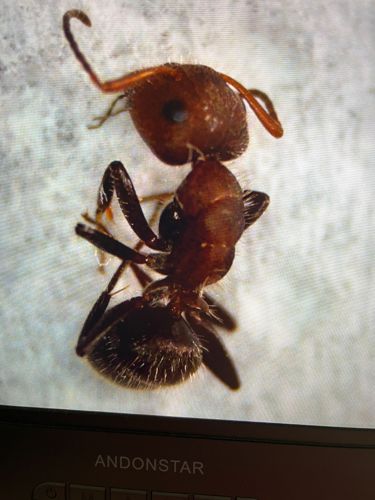Red Imported Fire Ant
Scientific Name: Solenopsis invicta
Order & Family: Hymenoptera, Formicidae
Size: Workers vary in size, ranging from 2 to 6 mm (0.08 to 0.24 inches) in length.

Natural Habitat
Primarily found in disturbed habitats such as lawns, pastures, agricultural fields, roadsides, and open areas. They construct conspicuous mounds in the soil, which can be several inches to over a foot tall.
Diet & Feeding
Omnivorous. Fire ants feed on a wide variety of foods, including seeds, young plants, insects, small vertebrates, and honeydew. They are also known to scavenge on dead animals.
Behavior Patterns
Fire ants are highly social insects that live in colonies. They build mounds in disturbed soil and can quickly colonize new areas. They are known for their aggressive behavior, especially when their nest is disturbed. Workers sting repeatedly, injecting venom that causes a burning sensation and often leads to pustules. They communicate through pheromones and can recruit large numbers of ants to a food source or threat.
Risks & Benefits
Risks: Fire ant stings are painful and can cause allergic reactions in some individuals, ranging from localized swelling to anaphylaxis. They can damage crops, electrical equipment, and infrastructure. They also negatively impact native insect populations and ground-nesting birds. Benefits: In their native range, they play a role in the ecosystem, but as an invasive species, their risks far outweigh any potential benefits.
Identified on: 9/3/2025